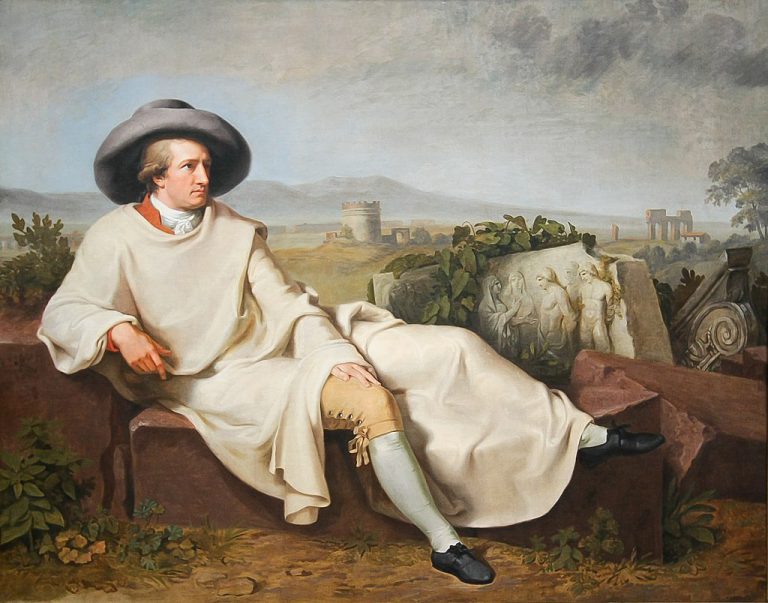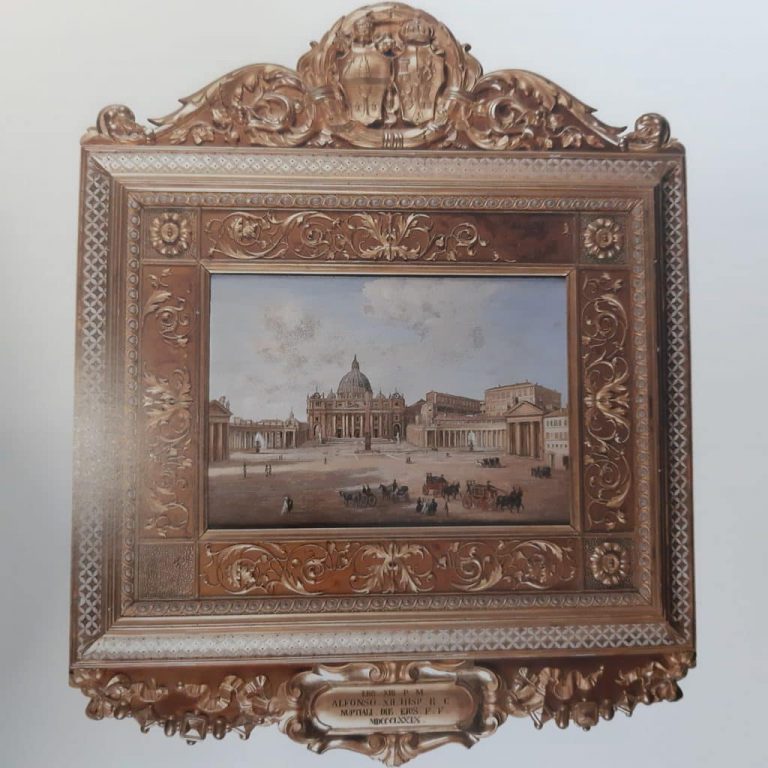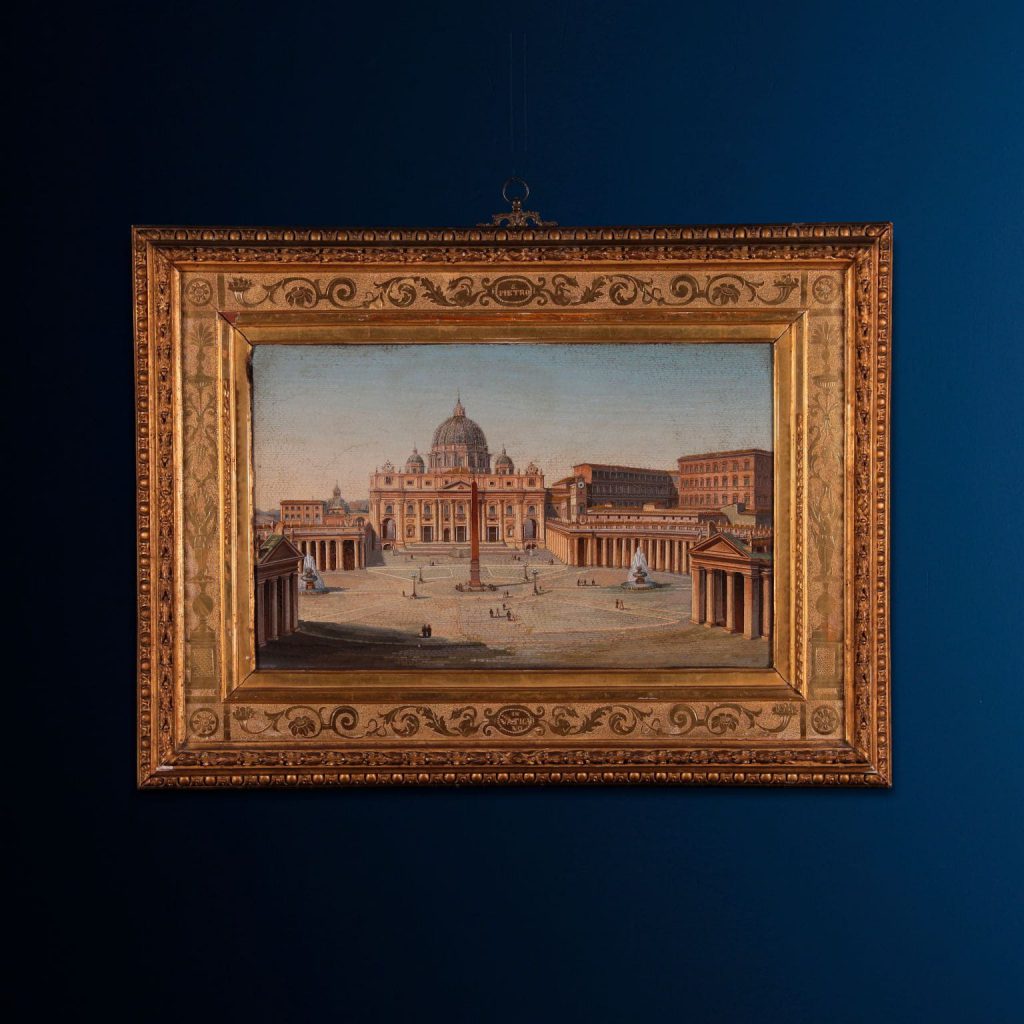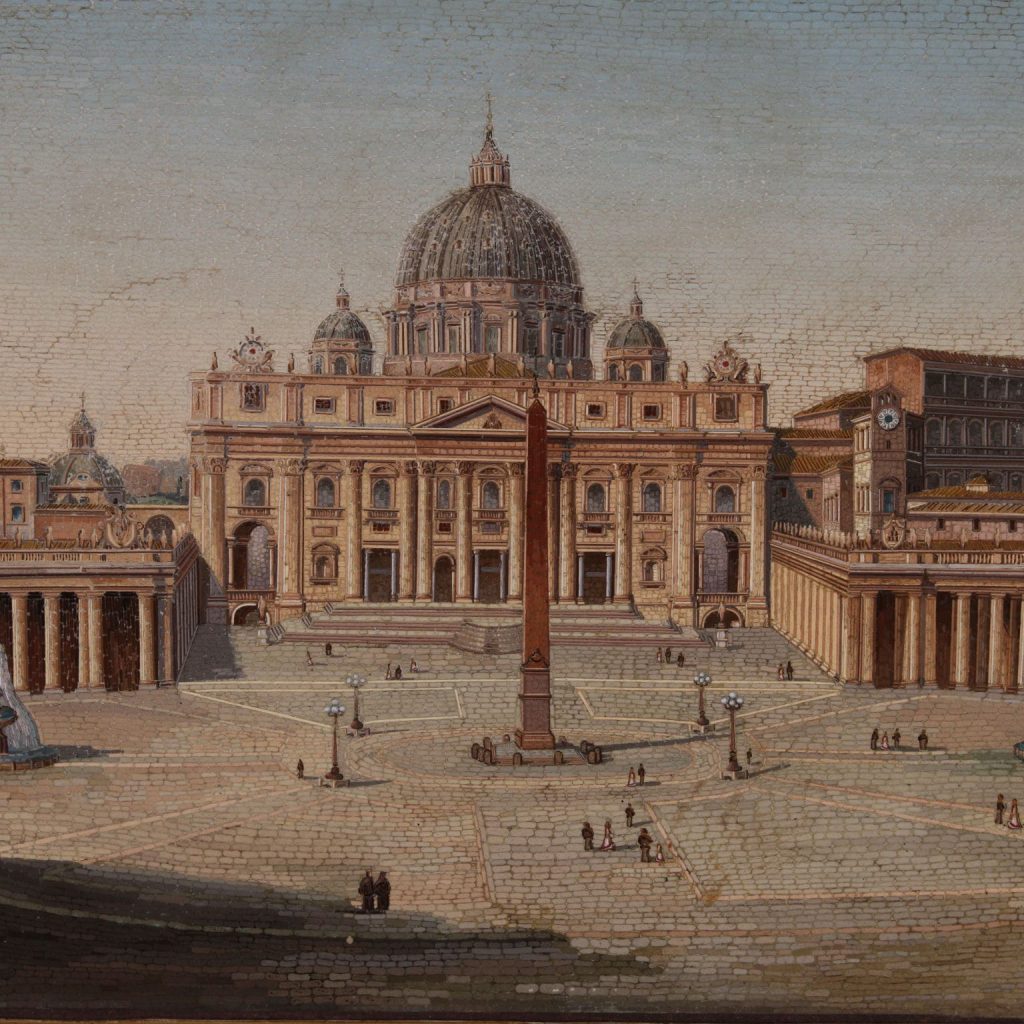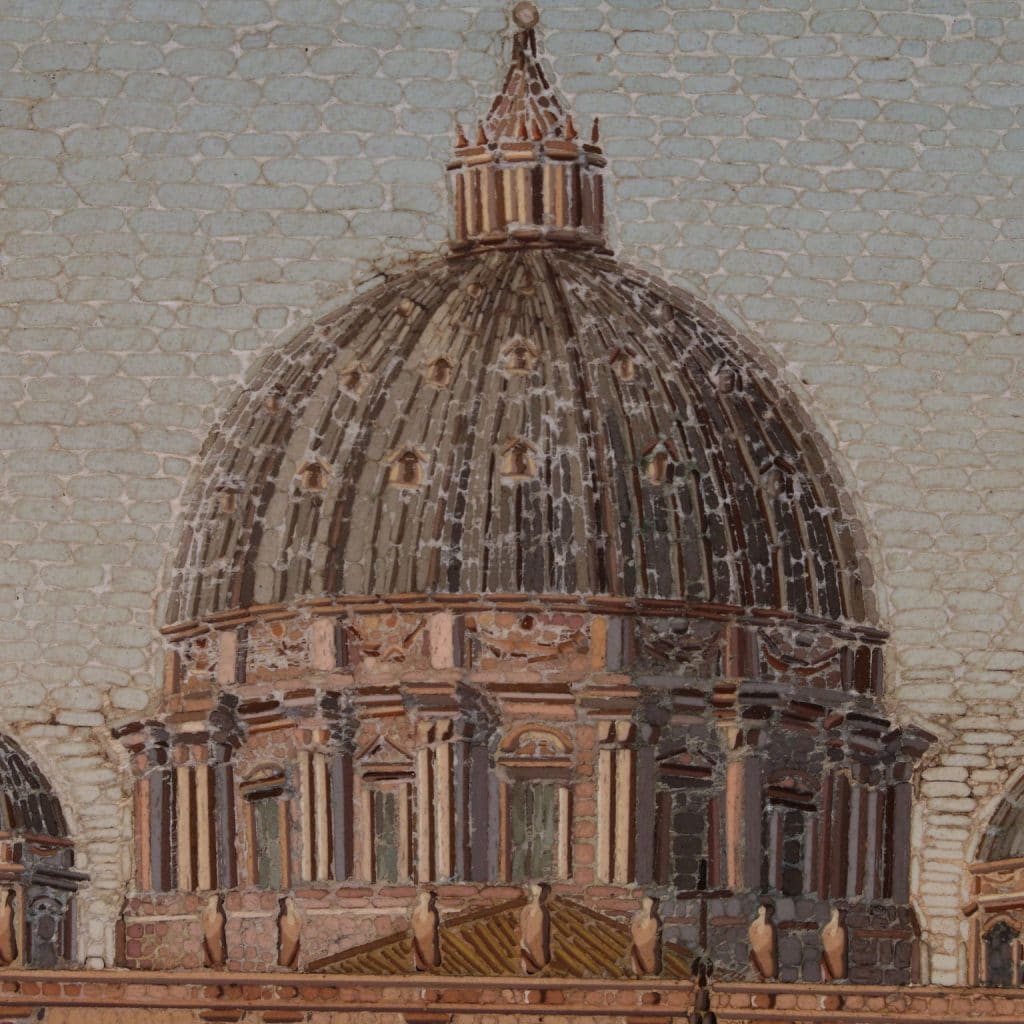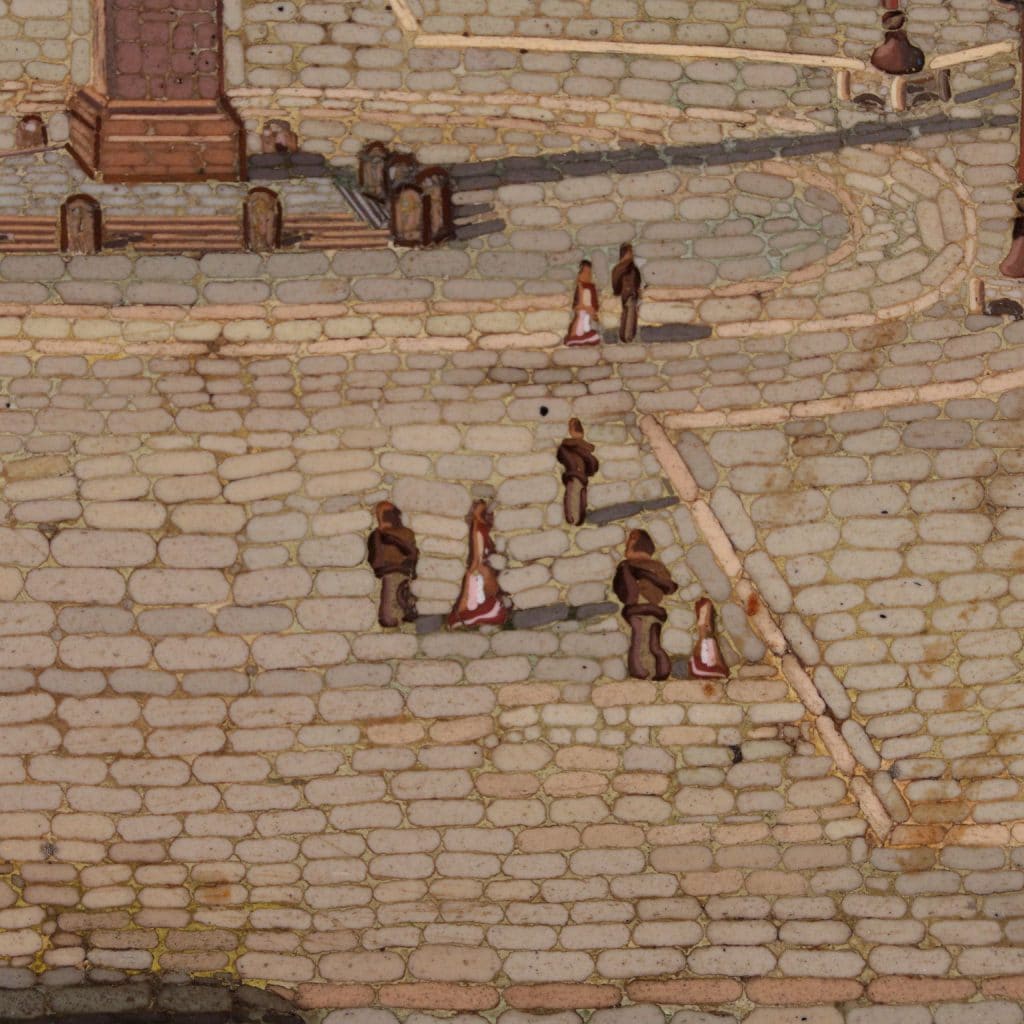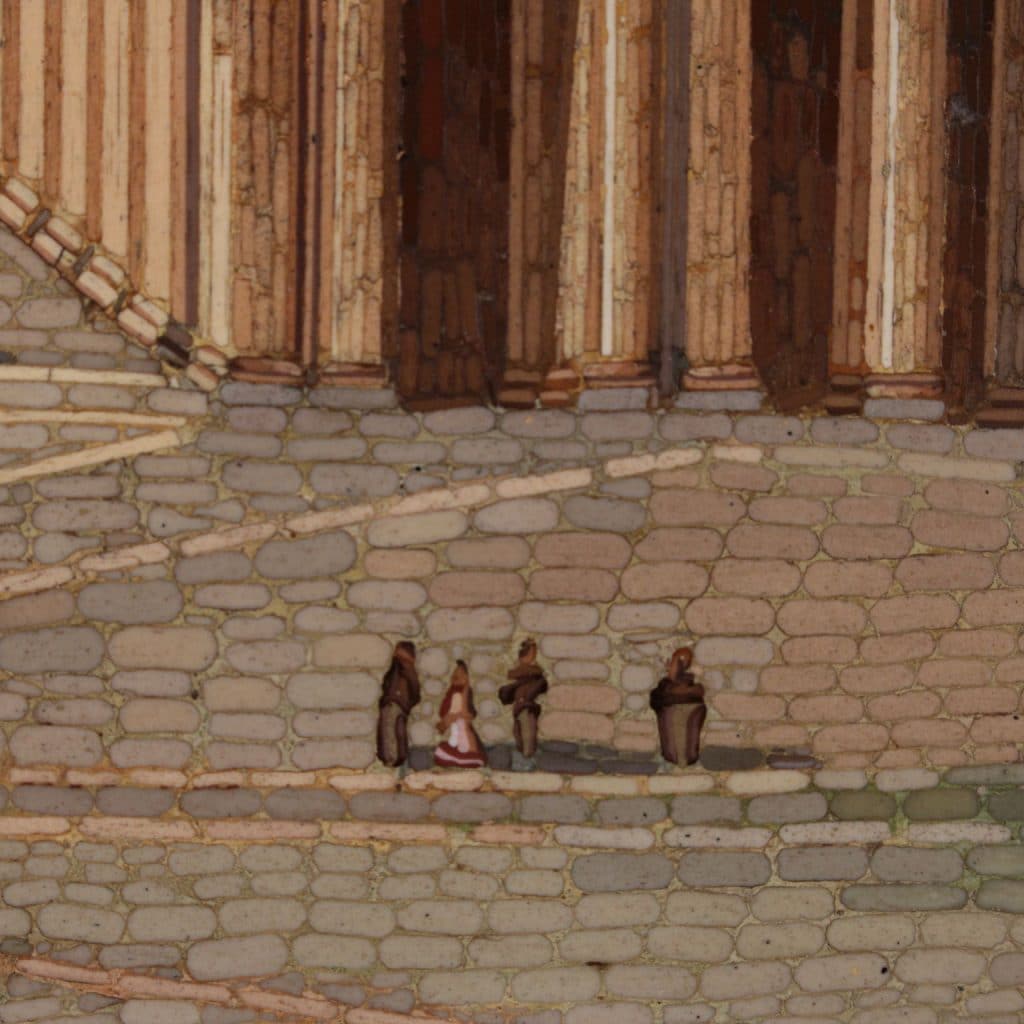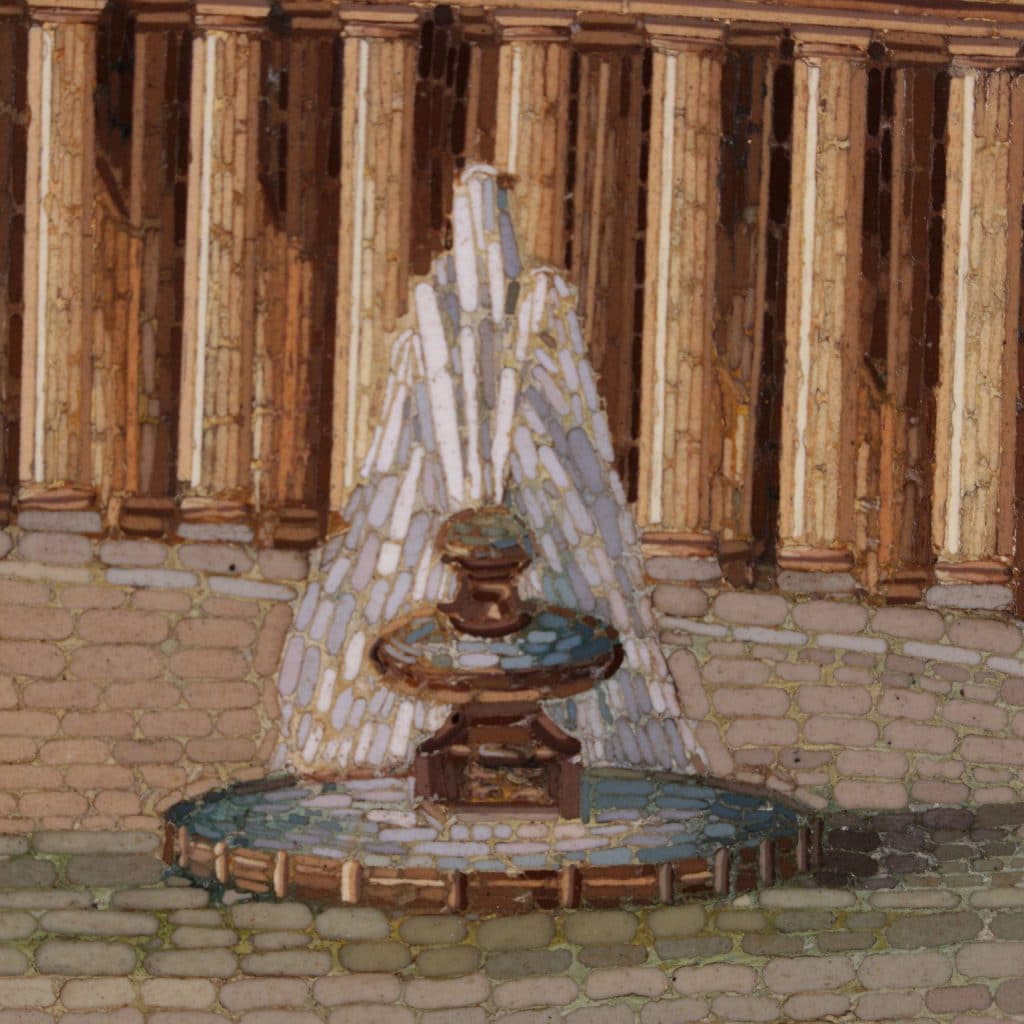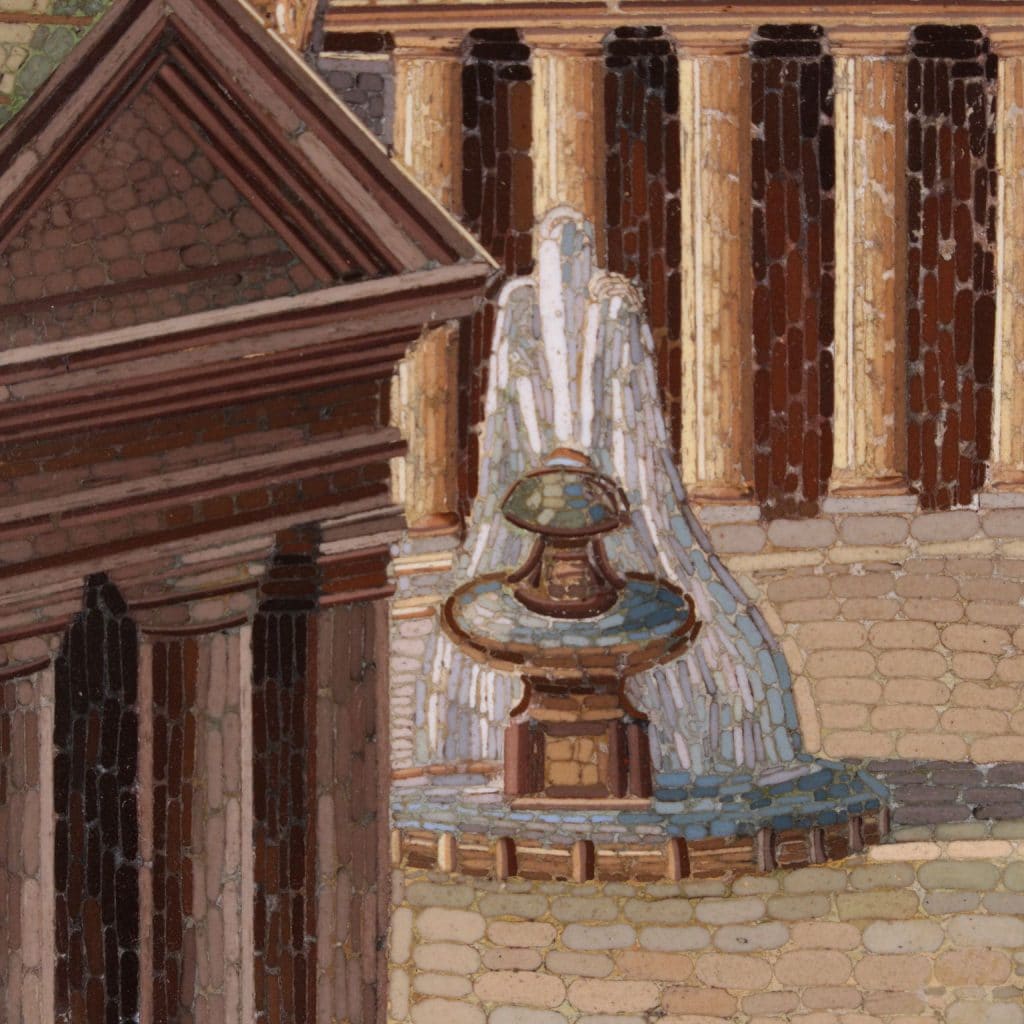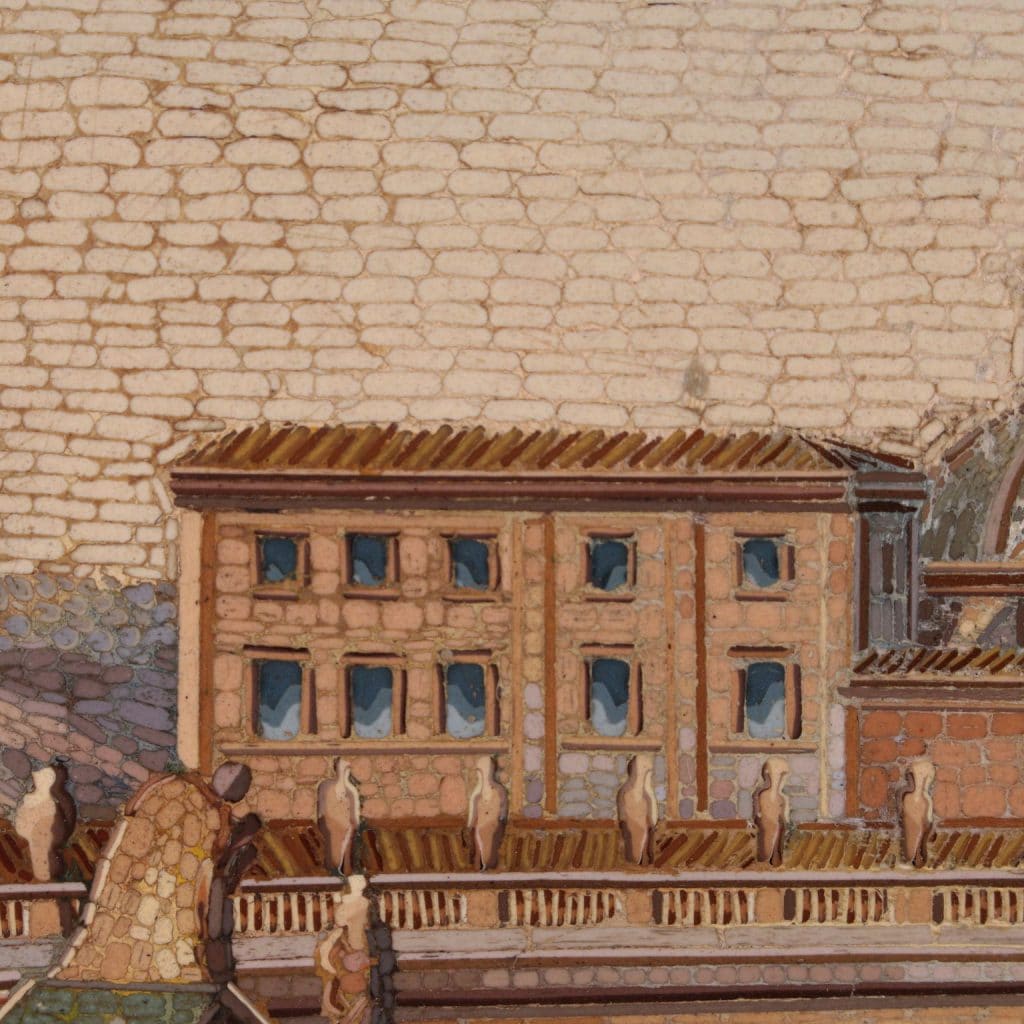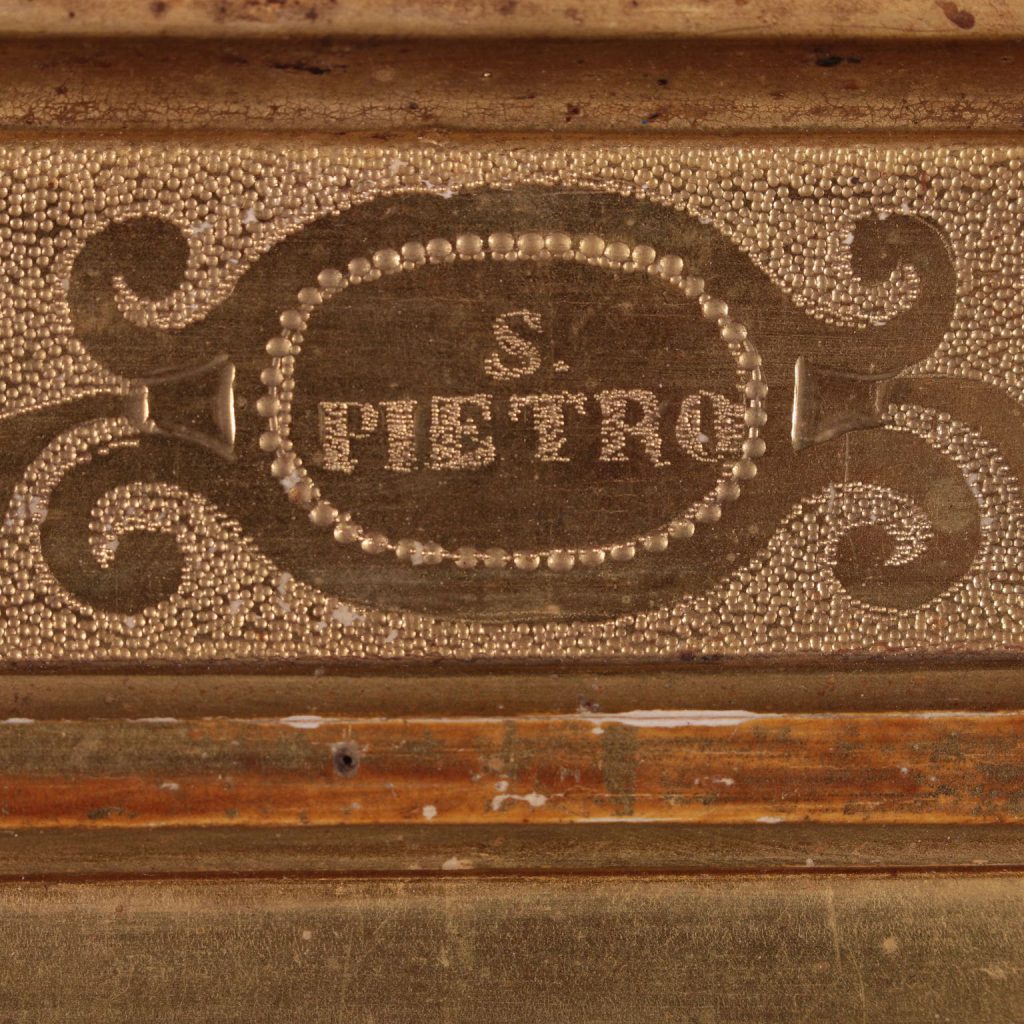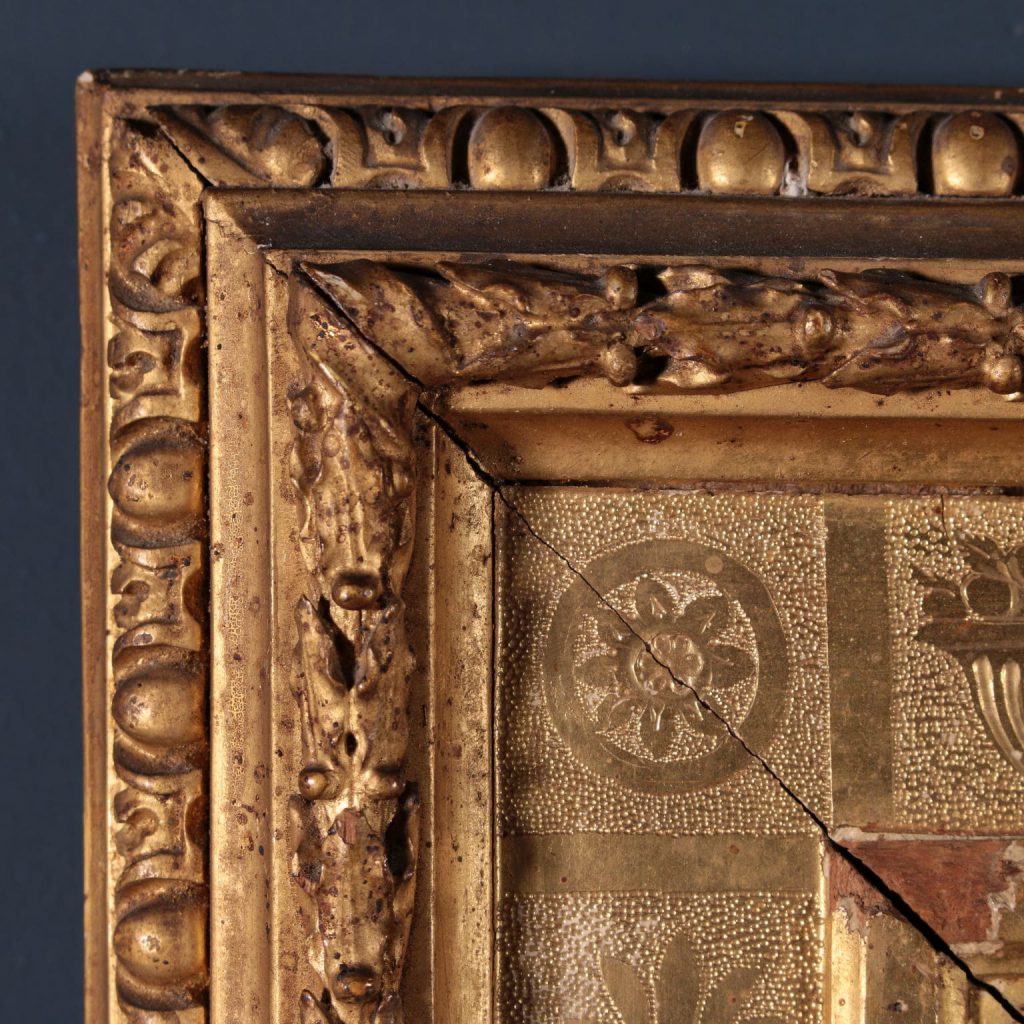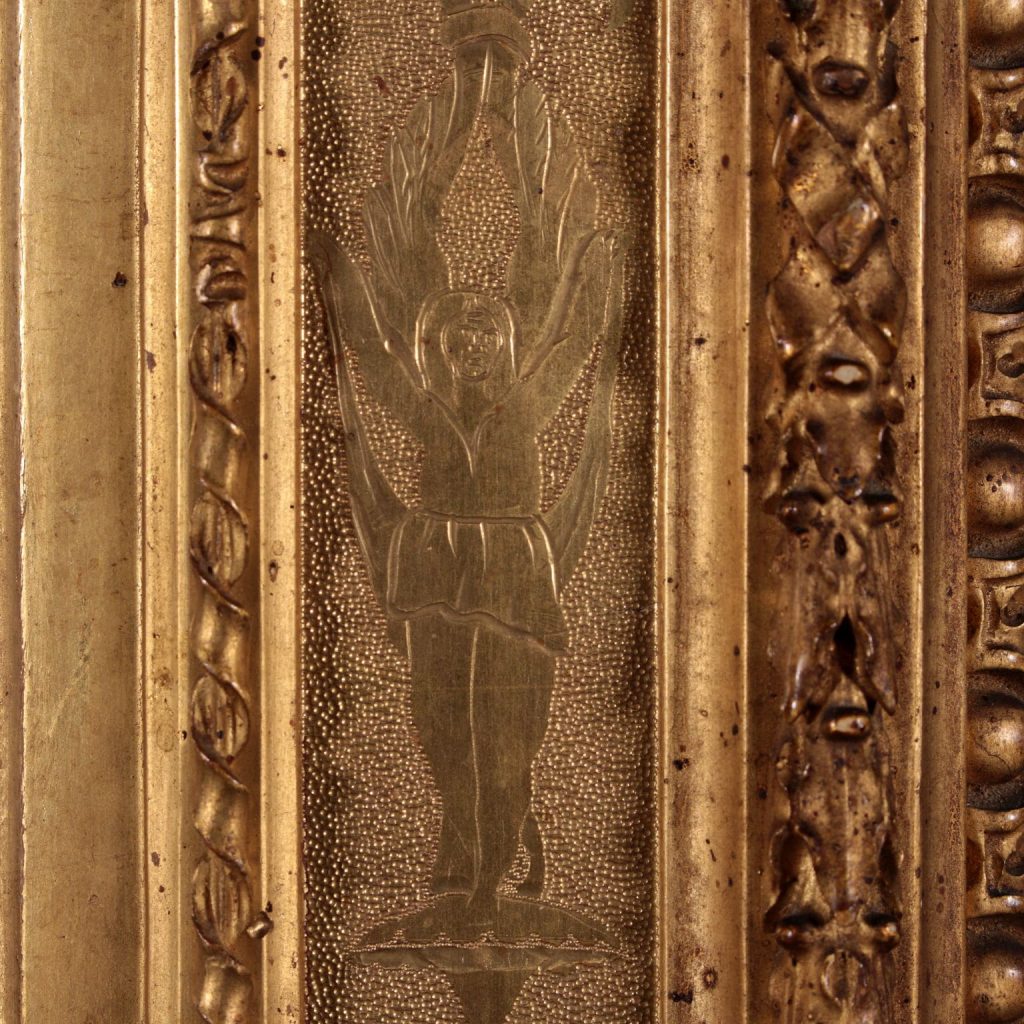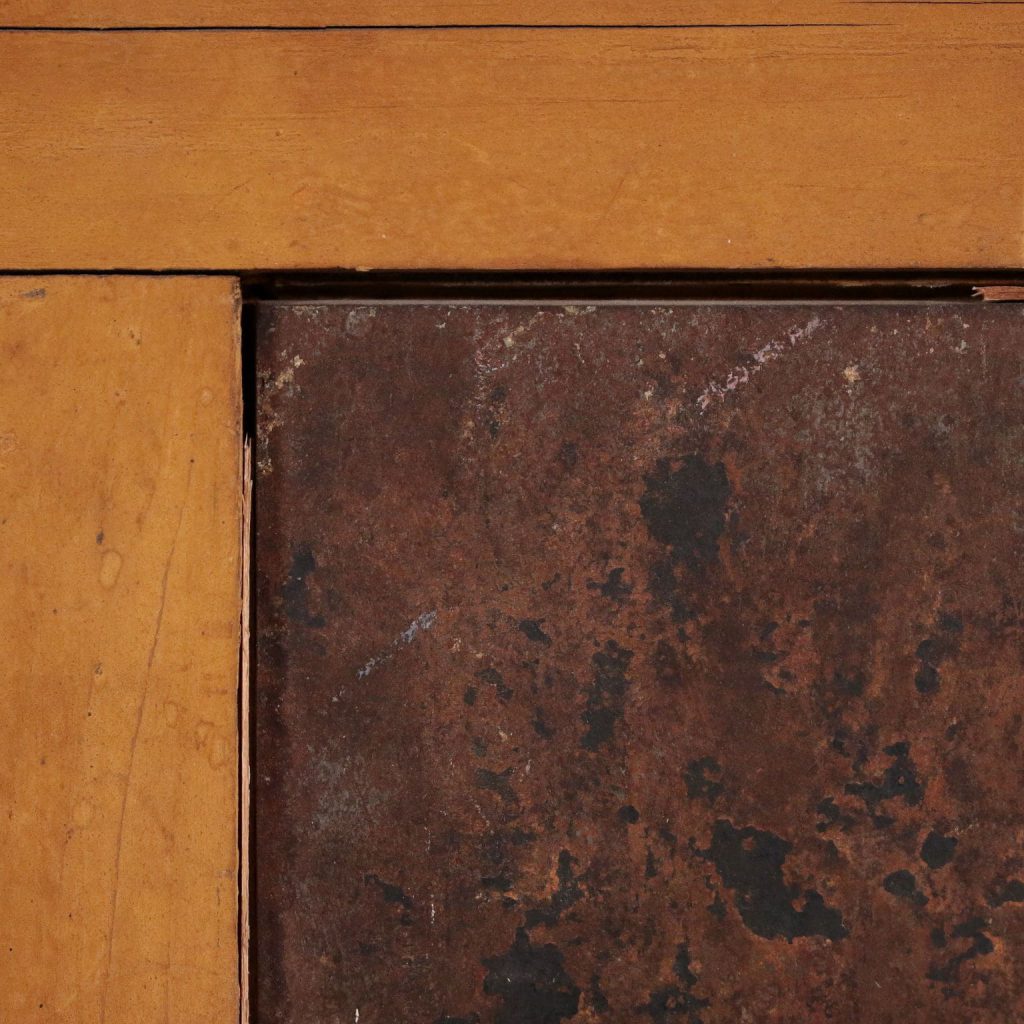Micromosaic View of San Pietro
Cassette framed mosaic
Mid-18th century and late 19th century
Description:
Rectangular micromosaic picture in an iron box, depicting St. Peter’s Basilica and the square with characters, made with a diagonal perspective cut. Cassette frame, carved and gilded in classic style with central engraving.
Candelabra decoration with vases, winged victories, griffins and flowers; there are two scrolls bearing the words “S. Pietro” and “In Vaticano”.
The micromosaic is well detailed and taken with a rather anomalous foreshortening view, with the typical play of shadows.
The frame has ovule and oak wreath moldings.
Dimensions: 25.5 x 41 cm
with frame: 44.5 x 59.5 cm
Historical-stylistic analysis:
As Alvar Gonzales Palacios writes, “The great mosaic activity in the center of Christianity, linked to the decoration of St. Peter’s Basilica, begins during the pontificate of Gregory XIII”. Giovan Battista Calandra will be the mosaicist of Pope Paul VI and will create the first mosaic placed in St. Peter’s, the San Michele Arcangelo by Cavalier D’Arpino, will then be commissioned to create the mosaics for the chapel of the Annunciation for the Cardinal Filomarino in Naples in 1647: mosaic paintings were in fact considered more expensive but preferable because they are eternal.
In 1727 it can be considered that in the Vatican there is now a real Studio for the production of the Mosaic; it was in fact in those years that the chemist Alessio Mattioli invented a formula that allows the manufacture of glazes based on stucco and linseed oil, which allowed the production of very small tesserae; this allowed, under the direction of Pietro Paolo Cristofari (superintendent of the Vatican Studio) to produce the first mosaic paintings of reduced dimensions of excellent quality which became one of the usual gifts of the popes to the great of the earth.
A beautiful example is also published in Il Tempio del Gusto, and is a mosaic signed and dated on the back “Filippo Cocchi 1785”, inserted in a splendid gilded bronze frame attributed to Valadier, donated by Pius VI to Princess Sofia Albertina of Sweden.
A further step forward in the construction technique will be given by the ability, in the second half of the 18th century. to create thin rods by melting the glazes so as to be able to cut the small colored tiles as needed. At the end of the century there are several workshops and mosaicists, among the best known we remember Giacomo Raffaelli, Cesare Aguatti.
It is in fact from the mid-18th century to the end of the 19th century, with the development and growth of the Grand Tour and slowly with the rediscovery of classic taste, driven by the findings in progress in the excavations of Pompeii and Herculaneum, that the micromosaics become very fashionable items. Several shops flourish that produce boxes and paintings, frames but also table tops. These mosaics look to the classical world by reproducing the paintings and mosaics that came to light thanks to archaeological excavations but also famous paintings or landscapes with Roman ruins.
The success of the Grand Tours brings scholars and aristocrats from all over Europe to Italy who provide the shops with new customers willing to spend. In Rome, some shops of stonecutters, bronzers and specialized mosaicists work to provide products suited to the wishes of this clientele, often collaborating with each other. For a visitor who has just finished the Tour of the excavations and Roman ruins, taking possession of one of these objects is not only the purchase of a souvenir, but satisfies the desire to search for beauty and culture, making the buyer a perfectly fashionable enlightenment.
In addition to the shops scattered throughout the city, the internal production of the Vatican remains active. The tiles were laid out on a marble surface or on iron boxes and could have bronze frames or carved and gilded wood, the quality of the support depended above all on the recipient of the gift. A View of St. Peter’s Square very similar to ours and probably from the same years, is published by Alvar Gonzalez Palacios and is the subject of a gift from Leo XIII to King Alfonso XII for his wedding in 1879 (now preserved in the Royal Palace of Aranjuez) . In fact, as evidenced by the inventories, various representations of the square were preserved in the reverend Fabbrica di San Pietro, which could then be chosen for the gifts.
Bibliography:
– Alvar Gonzalez-Palacios, Il tempio del gusto, ed. Longanesi 1984
– Alvar Gonzalez-Palacios, Pittura per l’eternità, ed. Longanesi 2001
- Micromosaic View of San Pietro

Antiques, Art and Design
FineArt is the new ambitious Di Mano in Mano project that offers an exclusive choice of antiques and design works, presenting them for their singularity and uniqueness.


